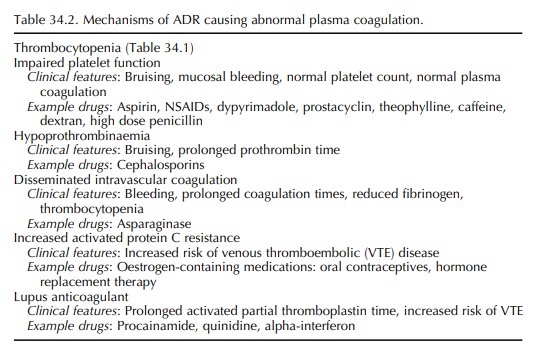Mechanisms of ADR-Affecting Haemostasis
| Home | | Pharmacovigilance |Chapter: Pharmacovigilance: Gastrointestinal ADRs
Clearly antithrombotic drugs such as oral and parenteral anticoagulants, thrombolytic and antiplatelet agents compromise haemostatic mechanisms at therapeutic doses as well as in overdose, in a manner analogous to the ‘type A’ occurrence of cytopenias with cytotoxic agents.
MECHANISMS OF ADR-AFFECTING
HAEMOSTASIS
Clearly
antithrombotic drugs such as oral and parenteral anticoagulants, thrombolytic
and antiplatelet agents compromise haemostatic mechanisms at therapeutic doses
as well as in overdose, in a manner analogous to the ‘type A’ occurrence of
cytopenias with cytotoxic agents. Interactions of drugs disrupting the
therapeu-tic control of oral anticoagulant treatment are another important
cause of ADR. These reactions will not however be considered here.
Haemostasis
is obviously affected by ADRs caus-ing thrombocytopenia, as discussed in the
previous section.
Other
drugs may predispose to haemorrhage by unin-tended effects on platelet
function, by affecting the production of
plasma coagulation factors or by caus-ing the consumption of coagulation
factors (as in DIC). A predisposition to thrombosis may be caused by acquired
resistance to the anticoagulant effect of activated protein C (APC) (e.g.
oestrogen-containing medications) or by the stimulation of acquired anti-bodies
to phospholipid (the ‘lupus anticoagulant’ phenomenon).
Table
34.2 lists mechanisms of haemostatic ADRs (for non-antithrombotic drugs)
together with examples of implicated agents.

Related Topics
